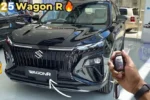Honda has taken a big step in the very competitive two-wheeler Indian market with the launch of Honda Shine 100. Hoping to take on the bike segment most fiercely contested in India, it positions itself as the last superman in mileage wars often defining a market of value conscious customers for Honda Motorcycle and Scooter India (HMSI).
On a battlefield where every KMPL is precious to consumers using these vehicles in India’s complex and diverse terrain and traffic conditions, the Honda Shine 100 is the part-owner. The Activa scooter line of Honda has been forayed into that category for almost two decades but the Shine 100 is a focused move by the company to improve its standing in vis-a-vis commuters, which has always been strong category for rivals.
Position Powerploys: Economy meets reliability Okay, Economical Shine 100 Explained On Its Strategic Landscape within Honda’s Product Mix and Global Two Wheel Category.
Shine 100 Shine Is Shine 100 Means to Understand the Purposeful Positioning of Motorcycle in Indian Market within Honda product line and Big picture. The Shine 100 is a car for everyone, unlike its more expensive, 125 cc cousin (the Honda Shine 125) that sets out to be the premium bike aimed at the slightly scooter-fringe-tilting sections of two-wheel traffic.
So the timing of the launch of Shine 100 is so much more strategic, on account that with the price of fuel spiking consumers are a little more receptive to running costs. With messaging gasoline mileage as its main differentiator, Honda directly addresses the biggest gripe of daily commuters — transportation cost, which can be for many shoppers, a large chunk in their overall monthly expenditure.
This strategic move reflects Honda’s understanding that winning the entry-level segment necessitates more than just a competitive Purchase Price, it is about a full ownership costs visibility where fuel efficient play a key game.
Engineering— The Groundwork Of Efficiency
The foundation of Honda’s engineering efficiency lies deep within the bones of the Shine 100. The motorcycle uses a completely new 100 cc air-cooled four-stroke single-cylinder engine powered by Honda’s Enhanced Smart Power (eSP) technology. This powertrain has been honed to deliver best-in-class fuel economy for reliability you can trust, once again celebrating a Honda vehicle delivery.
Engine frictions have been reduced across the entire engine as well as using advanced materials and manufacturing enable energy losses to be minimized, to the highest degree possible with Stoke’s craft. The combustion chamber pattern is meticulously worked for efficient combustion — and ignition timing as well as feasible forms of delivery are fine-tuned for all the averages typically found in Indian use cases.

The Rim Mission first and foremost is its efficiency credentials, to a great extend they depend on weight management other than just the engine. Honda says it has optimized material for a mix of extra stiffness, more stable design which allows the chassis to use a relatively mild spring setting to deliver energy that would have accelerated the car faster or maintained momentum in a more traditional sense–both very important parts-of superior real-world mileage. .
Practical Innovation: Key Features
The Shine 100 keeps technology within reach by being very feature focused, providing tangible value and remain competitive on price as part of the edgy, but also rather classic design also used by other project partners. The motorcycle has a sensible CBS system (combiletrino) that mean you safe, where braking force is distributed and optimized between the front and rear tyres – functional innovation for real-world conditions on two wheels.
The instrument cluster presents concise, readable graphics of the fuel gauge and fuel level up to riders, right in front of them among all age groups and comfort levels on the handlebars. Honda can take these pragmatic measurements of today’s motoring public, who want useful information and not just a showcase for glitzy metering.
The motorcycle is well thought out in terms of its maintenance-friendly design, providing visibility and accessibility to service points right out the engine block down to standardized components that will ensure availability of parts an economical purchase price for service along the totality of ownership life — all of which binds to the total economic proposition better than fuel efficiency alone.
Honey experience: more than just a purchase
Honda’s complete ownership experience — including the Shine 100’s long and impressive mileage metrics anyone? The showroom value chain is more than its premium mileage figures and Honda’s coterminous ownership experience from day one. With the maintenance schedule set to best inconvenience minimum while also being reliable, the service intervals ensure low downtime for owners who rely on their cars for daily use — and thus minimize costs.
Because Honda has a robust service network both in and around cities, and hinterlands equivalent across urban centers & small towns it is the best served brand in most parts where alternative isn’t available. That infrastructure leg up is a comfort to owners (read: small city and rural dwellers, service support is even more important than the product itself).
Combined with warranty package, the coverage it offers goes beyond initial purchase consideration for the ownership case. This added protection recognizes that many buyers in this space intend to keep ownership of the vehicle longer than the typical replacement cycle, a durability assurance tends to be an important value factor behind a purchase.
Market Effect: Going up against the norm
Introduction of Shine 100 is a direct attack on Honda in the entry-level two-wheeler space where Hero and Bajaj have had more solid positioning than even Honda over the years. Leveraging its engineering competence and reliability pedigree on a cost-vector it had been dominated by before, Honda is signaling its intent to capture perceivable share among volume-driven motorcycles in India.




